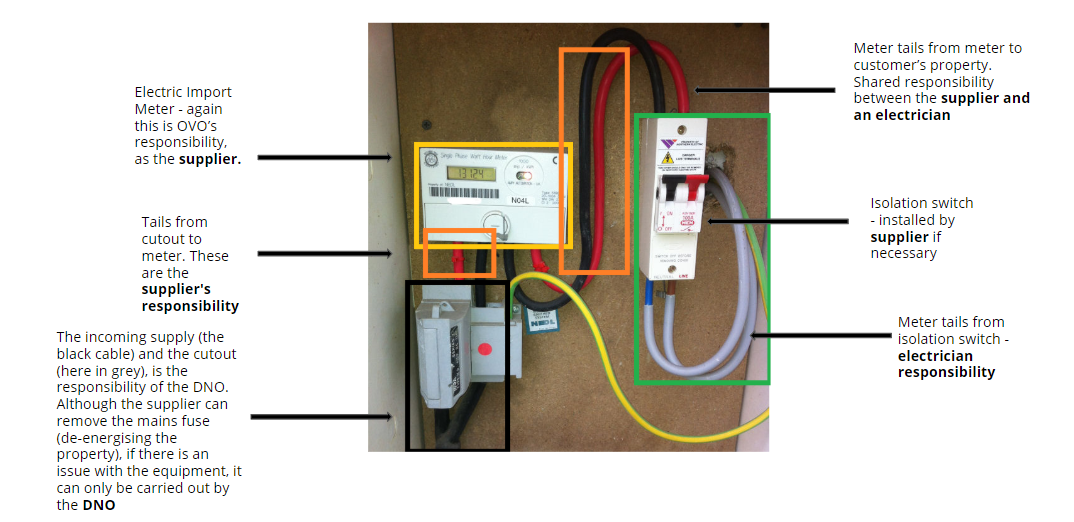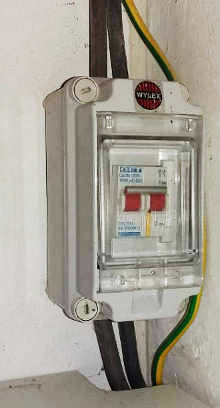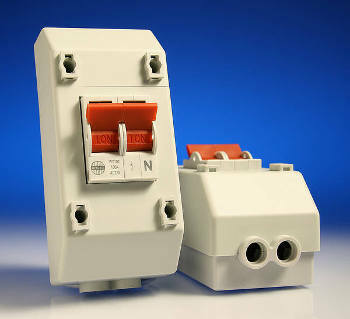Is this something Ovo do or could arrange and if so how do I go about it?
Chris
Best answer by Transparent
View originalBest answer by Transparent
View originalUpdated on 07/12/23 by Abby_OVO
Great to hear you’re looking to install an Electric vehicle (EV) charger! Sounds like your installation may need to involve several parties, as it involves installing a consumer unit and isolator switch.
The installation and maintenance of your consumer unit (also know as your fuse board) should be carried out by an electrician, we can’t recommend anyone specifically but find a registered electrician here.
As your supplier the part of this installation that we can help with is the fitting of an isolator switch:
An isolation switch (also known as a 'double-pole isolator') is a piece of equipment which can be installed on a metering supply that will allow the supply to be de-energised post-meter. The isolation switch should be fitted after the meter but before the consumer unit.
An isolation switch is designed to act as a circuit breaker on the mains electrical supply, so that any electrical work that needs to take place within a property can be completed safely by a private electrician. It also negates the need for a supplier to send an engineer to the property to de-energise the cut out (and re-energise afterwards) so that any internal electrical work can take place.

The isolation switch is located on the right of this photo. When the switch is turned off, there would be no power after the isolation switch, which in turn would allow a private electrician to complete any maintenance work or repairs on the member's internal electrical set up.
An isolation switch needs to be installed by your supplier. This is because the supply would need to be de-energised via the cut out and private electricians are not permitted to work on the cut out. Therefore, the supplier would need to arrange for an engineer to go to the property to install one.
Reach out to our Support Team in order to schedule in an engineer visit. As a non-essential maintenance job there is a charge for this, check this guide to see the current cost.
Once you’ve got the EV charger installed, we’d love to hear more about your EV wheels! ![]()
EV owner? Check out our exclusive EV plan - OVO Drive + Anytime!
After I signed on to EV Everywhere, Charged EV gave me an appointment for installation about 5 weeks hence. A engineer arrived on the appointed day, but said he had come just to do a survey. He hadn’t seen the information and photos I had sent ChargedEV. After looking at my system he said a main isolation switch would have to be fitted before the charger could be installed. On the phone, Ovo said this would cost me £158 and the earliest appointment they could offer was about 9 weeks away.
This is a gentle warning to others that the installation process may be neither fast or free. A lot of time could have been saved if I had been asked, at the start, whether I had a main isolation switch. ChargedEV are not great communicators.
I think we could do with a bit more clarification please
Do you mean that your existing Consumer Unit doesn’t have a 100A Switch Disconnector within it?
Or is it that OVO require you to have another one between the Smart Meter and the Consumer Unit?
I have both… which means the Consumer Unit can be isolated without having to pull the 100A Service Fuse (and get the Distribution Network Operator to reseal it). Here’s the separate box which just houses a disconnector:

If you don’t want to wait 9 weeks and pay £158 then you could surely just get a local electrician to install one similar to mine in the photo?
Although I bought a separate switch and enclosure, you can now get an all in one unit, designed for just such a scenario. Here’s one available from TLC-Direct at £13.45 +VAT.

Obviously you first need to confirm with OVO that such a unit would achieve what they’re after. Direct them to read this Forum post if it helps.
Many thanks for your help, Transparent. My consumer unit does have a 100A switch disconnector, so its seems that the engineer was recommending an additional one such as you describe. I love the idea of doing this for £20-odd, but the Ovo person told me installation had to be done by their man (or woman), and I I imagine that most of the £158 would be for labour .
Just to clarify, an electrician is NOT allowed to cut seals and pull the main fuse, you have to work under a mocopa, to be able to do that, its illegal even tho they do !
Thanks
MOCoPA = Meter Operation Code of Practice Agreement
I live a rural part of the Westcountry and have been party to telephone calls between local qualified electricians and our DNO (Western Power) over the years. It is usually the case that WPD are indeed present when it is necessary to pull the fuse. But I have witnessed occasions where the response is “We can’t get to you for another half-hour yet; pull the fuse and continue your work in the meantime.”
Perhaps I am biassed in that such conversations have only occurred where it is a reputable local electrician, well known to the area DNO Engineers.
No account yet? Create an account
Enter your username or e-mail address. We'll send you an e-mail with instructions to reset your password.